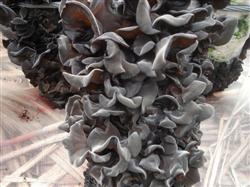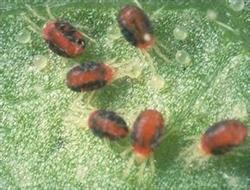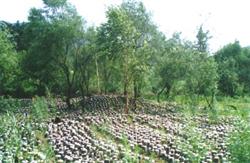High Quality and High Yield Cultivation Techniques of Auricularia auricula

Auricularia auricula is a valuable native product and traditional export product in China, and it is also one of the main artificially cultivated edible fungi in China, with the highest output and quality in the world. The producing areas of Auricularia auricula in China are widely distributed. Because of its low production cost, short cycle and quick effect, it is deeply welcomed by the majority of mushroom people. Take bag material cultivation as an example, 55 × 15cm bags generally cost 0.6 RMB0.7 per bag, and the production plus equipment investment in the first year is about 1 yuan per bag, which can produce about 75 grams of dried Auricularia auricula. If calculated at 50 yuan per kilogram, each bag can get a net profit of more than 2 yuan. One mu of land can store 10,000 bags, which will not affect the cultivation of rice and other crops after harvest. Places with water irrigation conditions can be planted twice a year, and a mu of land can make a profit of 40,000 yuan. However, the mycelium growth of bag-planted Auricularia auricula is weak, and its anti-fungal ability is poor, so it is easy to be contaminated by mold in the process of cultivation, and it is not resistant to high temperature, so its production is greatly restricted. According to the biological characteristics of Auricularia auricula and the local climatic characteristics, we have mastered a set of bag cultivation techniques for high quality and high yield of Auricularia auricula, which are suitable for local cultivation, and have been popularized and applied in a large area. Remarkable economic and social benefits have been achieved. In this paper, the key points of cultivation techniques are introduced as follows: 1 the environmental conditions for the growth and development of Auricularia auricula are as follows: 1.1.The temperature of Auricularia auricula belongs to medium-high temperature type, the temperature of fungus and auricle is about 20 ℃ and 28 ℃, and the optimum temperature of fungus is 25 ℃ and 28 ℃. 1.2 humidity mycelium culture stage, the environmental humidity is 50% Murray 70%, the environmental humidity is required to reach more than 80%, and the humidity of the culture material should be on the high side, so that the moisture is sufficient in the later stage, which should reach about 65%. It can be measured by hand, hold the culture material by hand, and do not drip when water drops appear between the fingers. 1.3 Auricularia auricula is a kind of aerobic fungus, sufficient oxygen is needed for mycelium growth and fruiting body development, and it is difficult for hyphae to recover and grow when the concentration of carbon dioxide is too high. 1.4 No light is needed when the bacteria are exposed to light, and the bacteria stick is cultured in low light. When the hyphae are ready to come out of the ear, strong light is needed to stimulate and guide the ear. 1.5 PH value the suitable PH for mycelium growth of Auricularia auricula is 6 Mel 6.5. Generally, the PH value should be about 8 when mixing materials, and the PH value should be reduced to 6 Mel 6.5 naturally after sterilization. (2) the cultivation season of bag Auricularia auricula is autumn and winter. The cultivation season of winter planting is generally arranged from late October to the end of November, and the cultivation season of autumn planting should be arranged from the end of August to the beginning of September or when the indoor maximum temperature in summer is lower than 30 ℃. When the daily average temperature is 20 ℃, the yield will be affected if the bag is pushed forward 60 ml for 70 days. 3 selection of culture materials: oil-free broad-leaved tree sawdust, corncob, cottonseed shell (must be new materials without mildew), wheat bran, rice bran, gypsum powder, brown sugar, quicklime and so on. 4 several commonly used formulations: (1) mixed sawdust 81.5%, wheat bran 10%, corn meal 5%, soybean powder 2%, raw lime powder 0.5%, gypsum powder 1%: (2) miscellaneous sawdust 81.5%, wheat bran 15%, soybean powder 2%, raw lime powder 0.5%, gypsum powder 1%, if conditions permit, you can add 20%, 30% cottonseed shell. (3) 70% miscellaneous sawdust, 17% cottonseed shell, 10% wheat bran, 1% brown sugar, 1.5% gypsum, 0.5% quicklime powder; (4) 80% miscellaneous sawdust, 8% wheat bran, 10% rice bran, 1% brown sugar, 1% gypsum powder. (5) 80% of miscellaneous sawdust, 7.5% of wheat bran, 7.5% of cage bran, 3% of rice bran, 1% of brown sugar and 1% of gypsum powder. The ratio of above formula to water is 1: 1: 1: 2. (5) there are three requirements for mixing and bagging, one is to be uniform (usually dry for 3 times), the other is to control the moisture content (after adding water for 3 times), and the third is to have a proper PH value. When mixing the material, first dry mix, then wet mix, be sure to mix well, otherwise sterilization is not completely easy to infect miscellaneous bacteria. Those with cottonseed shell in the formula should be soaked in lime water in advance, and those with soybean powder should be ground fine to avoid large particles. The rest of the mixing method is the same as the mushroom stick, the water content should be pinched by hand to form a ball, twist the material with fingers, the fingers have a sense of moisture. The plastic bag specification of cultivated Auricularia auricula is 15X55em polyethylene bag, each bag contains 800g dry material to make ear rods. Since the ratio of material to water is 1: 1 / 2, the weight should be 1.5-1.7kg after packing. 6 during sterilization, the inner ear rods of the container should not be arranged too closely, so that the steam flow can be smooth and sterilized thoroughly. When the temperature reaches 60 ℃ and 65 ℃, the air conditioner will be released once, and the temperature will be kept at 15 ℃ for 16 hours when the temperature is above 98 mol. Prevent air leakage during sterilization, otherwise the required temperature in the container will affect the sterilization effect. (7) the inoculated ear rods can be inoculated when the cooling temperature is less than 25 ℃, and the "Xinke No. 5" variety is mainly selected. generally, each package of bacteria can receive 25-30 bags about one jin. Inoculation and disinfection should be strict. Inoculators' hands should be scrubbed with 75 degrees alcohol, and the inoculation box should be disinfected with disinfectant. After the disinfectant is ignited and sealed, it should be inoculated in the box 30 minutes later, and a box of ear sticks should be picked up within an hour. When inoculating, pay attention to less damage to the bacteria, avoid strong pressure with the fingers, resulting in the bacteria do not germinate. 8 the mycelium culture of ear bags should first do a good job in the cleanliness of the culture room. In the culture room, 250 ml of cresol soap and 25 jin of water were sprayed with 250 ml of cresol soap and 25 jin of water before stacking ear sticks in the culture room. Seal smoke disinfection with formaldehyde and potassium permanganate 2 days before stacking ear sticks. At the initial stage, the temperature of 20-30 ℃ should be controlled or chosen, and the temperature lower than 20 ℃ or higher than 30 ℃ should be avoided as far as possible (above 30 ℃ affects mycelium growth and finished product rate, lower than 20 ℃ mycelia recover slowly and affect the survival rate). It is best to keep 25 ℃ 28 ℃ for the first 10 days and 20 ℃ for 10 days; the humidity of the culture room should be kept below 70%. Ventilation should be done according to the temperature and air condition of the culture room during the culture period, and the bag can be untied to increase oxygen when the mycelium spreads to 8ml 10 cm. Later, when the mycelium grows slowly, it is appropriate to use group needles to increase oxygen, but the amount should not be too much. The light line of the culture room should be controlled darker. About 60 days later, after the mycelium was full, the mycelium was properly cultured for a few days, and the light could be seen to stimulate the ear when the bag became soft. During the period of ear rod culture, it is miscellaneous bacteria if yellow, red, green and green plaques are found in the bag. The lighter ones can be injected with alcohol and moved to another room for separate culture. The seriously polluted bags, especially those infected by Alternaria orangeus, should be isolated immediately and buried or burned in the distance to avoid vine extension and environmental pollution. 9 the cultivation site where the ear field is ready to plant black fungus should be clean, well-ventilated, sunny and close to the water source, turn the soil of the aisle to the border to form a convex border (tortoise back type), the soil should be broken, and it is best to spread a small amount of weeds or rice straw. Plastic film can also be used to cover the bed after drilling holes to prevent the sand from sticking to the ear on rainy days. The width of the bed is about 1.2 meters, and the length depends on the site. Leave a 60 cm aisle in the middle. Pull a wire in the border or use a small wooden rod as an oblique support. Herringbone open-air discharge, the density is the same as or slightly sparse with Lentinus edodes, generally separated by 12MUR 15cm between each bag. 10 out of the ear management spring cultivation in early February or autumn cultivation in late October will send the mycelium of the ear stick to the ear field, choose cloudy or sunny days to show off, with 6 mm nails designed to make holes around the fungus-producing ear bags (generally nail board 1.5 cm plum-shaped interval), each bag has 180 holes, with a depth of 1 color 1.5 cm. The main management after piercing is moisturizing, preventing the orifice from drying and promoting the recovery of hyphae. When the air humidity is insufficient, water can be watered into the border trench aisle to increase humidity. The ear bud forms in about 10 days. It is not suitable to spray water to the ear bud in the ear bud stage. Only when the ear piece is larger, spray water directly to the ear piece. After the ear bud is opened, spray once in the morning and evening, be sure to grasp the temperature when spraying water, and do not spray water when it is higher than 25 ℃. Keep it dry and wet to promote the growth of the earpiece. Spray carbendazim or carbendazim solution around the ear shed and aisle once a week to keep the cultivation environment clean and reduce the chance of miscellaneous bacteria pollution. 1l harvest when the auricularia auricula is 8 minutes ripe (when the ear slices are fully unfolded), stop spraying water two or three days before harvest, harvest when the ear slices are dry and shrink, pick once, and remove the residual ear base. Stop watering for 7 days after harvesting, and then spray water management a week later, to promote the continued emergence of the ear. After the second batch of Auricularia auricula harvest, there is more water loss in the ear bag, so it should be properly injected, and the temperature should be lower than 25 ℃, otherwise it is easy to be contaminated by miscellaneous bacteria. Generally, a bag of ear bags can be picked in 4 batches, each with an interval of about 15 days. the yield of the first batch is high and the last two batches are low. After harvest, the fungus is dried, preferably in the shade, not in the strong sun, and the product can be put on the market after drying.
- Prev

Control methods of Auricularia auricula mites with substitutes
In the method of trapping and killing the oil-scented cake powder, take the right amount of rapeseed (0mai 5025.00) and grind it into a cake powder, then stir-fry it over low heat until the cake powder gives off a strong oil flavor. Cover the culture material or bed damaged by bacteria and mites with wet cloth, spread gauze on top, sprinkle oil cake powder on the gauze and wait.
- Next

Pastoral cultivation of Auricularia auricula
The consumption of cultivation resources of Auricularia auricula is too large, which is disadvantageous to the long-term development, and the per unit yield is low, and the benefit is unstable. Hebei Lincheng edible fungus farm has carried on the exploration of bag material field cultivation, after 3 years finally mastered its cultivation key points, inoculation success rate, ear output and quality have a great breakthrough, tutoring a batch of ears.
Related
- Fuxing push coffee new agricultural production and marketing class: lack of small-scale processing plants
- Jujube rice field leisure farm deep ploughing Yilan for five years to create a space for organic food and play
- Nongyu Farm-A trial of organic papaya for brave women with advanced technology
- Four points for attention in the prevention and control of diseases and insect pests of edible fungi
- How to add nutrient solution to Edible Fungi
- Is there any good way to control edible fungus mites?
- Open Inoculation Technology of Edible Fungi
- Is there any clever way to use fertilizer for edible fungus in winter?
- What agents are used to kill the pathogens of edible fungi in the mushroom shed?
- Rapid drying of Edible Fungi

